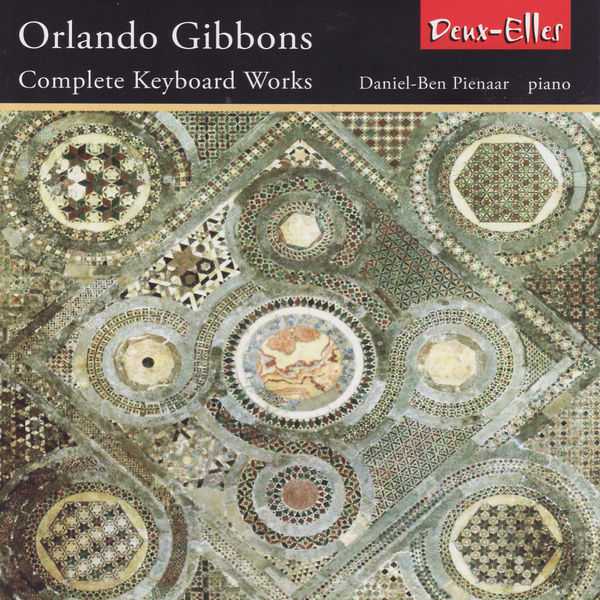
Composer: Orlando Gibbons
Performer: Daniel-Ben Pienaar
Number of Discs: 2
Format: FLAC (tracks)
Label: Deux-Elles
Release: 2007
Size: 384 MB
Recovery: +3%
Scan: cover
CD 01
01. Fantasia, MB 10
02. Pavan, MB 17
03. Galliard, MB 24
04. Ground, MB 26
05. Mask, ‘The Fairest nymph’, MB 43
06. Fantasia, MB 14
07. Alman, MB 35
08. Galliard, MB 25
09. Ground, ‘The Italian ground’, MB 27
10. Mask, ‘Lincoln’s Inn Mask’, MB 44
11. Prelude, MB 2
12. Alman, MB 37
13. Alman, MB 36
14. Fantasia, MB 6
15. Fantasia, MB 5
16. Galliard, ‘Lady Hutton’, MB 20
17. Galliard, MB 23
18. Galliard, MB 21
19. Fantasia, MB 9
20. Pavan, MB 16
21. Ground, ‘Whoop, do me no harm, good man’, MB 44
22. Ground, ‘Peascod time, or, The hunt’s up’, MB 30
CD 02
01. Fantasia, MB 7
02. Alman, MB 33
03. Coranto, ‘French Coranto’ MB 38
04. Coranto, MB 39
05. Mask, ‘Welcome home’, MB 42
06. Prelude, MB 1
07. Versus, MB 4
08. Fantasia, MB 11
09. Alman, MB 34
10. Coranto, MB 40
11. Fantasia, MB 13
12. Mask, ‘The temple mask’, MB 45
13. Ground, ‘The Queen’s command’, MB 28
14. Ground, ‘The woods so wild’, MB 29
15. ‘French Air’, MB 32
16. Prelude, MB 3
17. Fantasia, MB 8
18. Pavan, MB 15
19. Galliard, MB 22
20. Mask, ‘Nann’s mask, or, French Alman’, MB 41
21. Pavan, ‘Lord Salisbury’, MB 18
22. Galliard, ‘Lord Salisbury’, MB 19
23. Fantasia, MB 12
Pianist Daniel-Ben Pienaar, an English performer and educator of South African origin, is one of the few individuals to have played the Renaissance organ and virginal music of Orlando Gibbons on a modern piano. One of the others was Glenn Gould, from whom Pienaar takes pains to distinguish himself in his own booklet notes. He strives for a more pianistic approach in contrast to Gould’s abstract (Pienaar’s word is “arid”) playing, with a good deal of pedal and a light, feathery treatment of the quick runs that emerge from Gibbons’ basically chordal textures. In various other ways, Pienaar takes Gibbons’ music merely as a creative starting point. He groups most of the music into heterogenous sets of from three to five pieces, creating suite-like configurations that Gibbons wouldn’t have recognized. It may be that, on a piano, Gould (who named Gibbons, not Bach, as his favorite composer) better complements the complex, serious style of Gibbons’ music; Pienaar comes off as frilly and a bit sentimental in comparison. But the real choice is between piano and the instruments for which Gibbons wrote the music. Hear the recording of a program similar to Pienaar’s by John Toll, playing a small organ, on the Linn label; how the focus stays on the contrapuntal structure of the music, how the rapid runs complement that structure instead of seeming like an exotic effect, how the serious, intellectual quality of Gibbons’ keyboard music, the perfect counterpart to his refined madrigals. There’s no doubting the elegance and the technical facility of Pienaar’s performances. The only doubt arises when one considers the question of their necessity.



